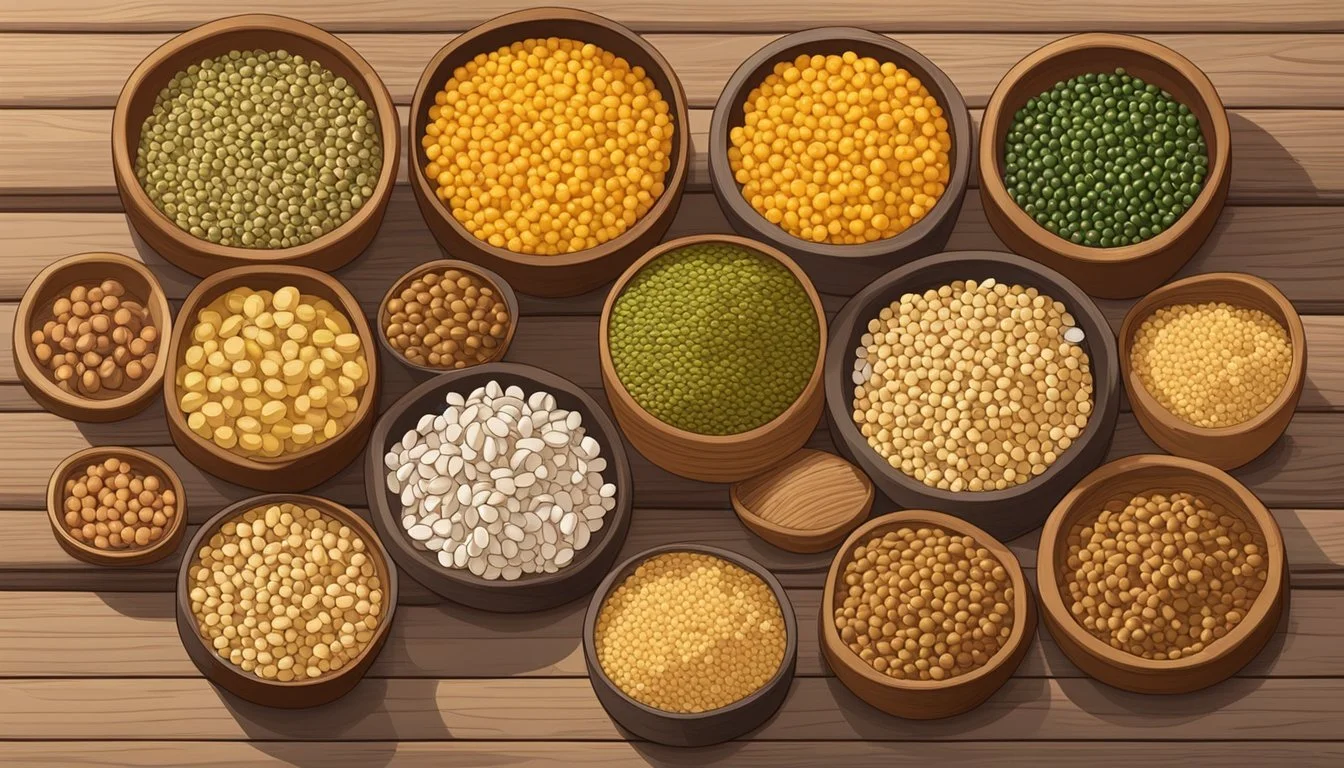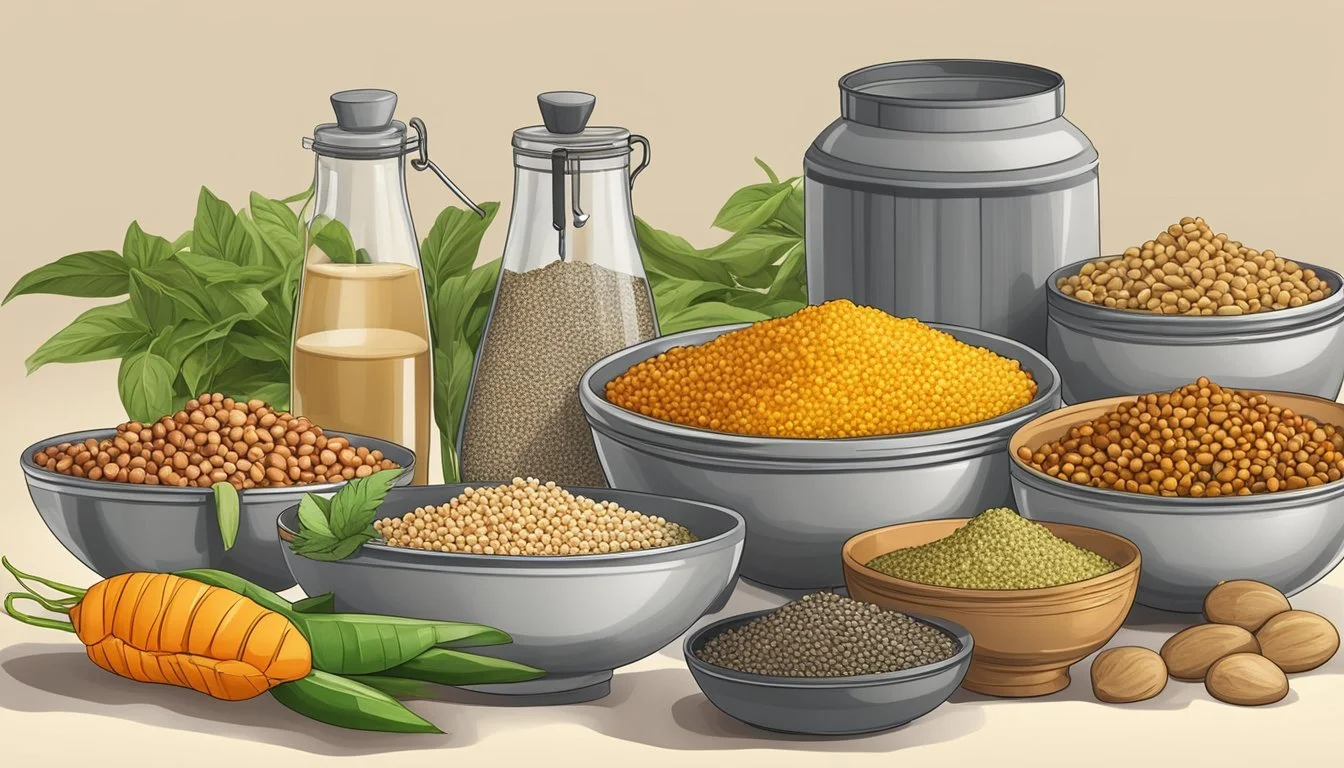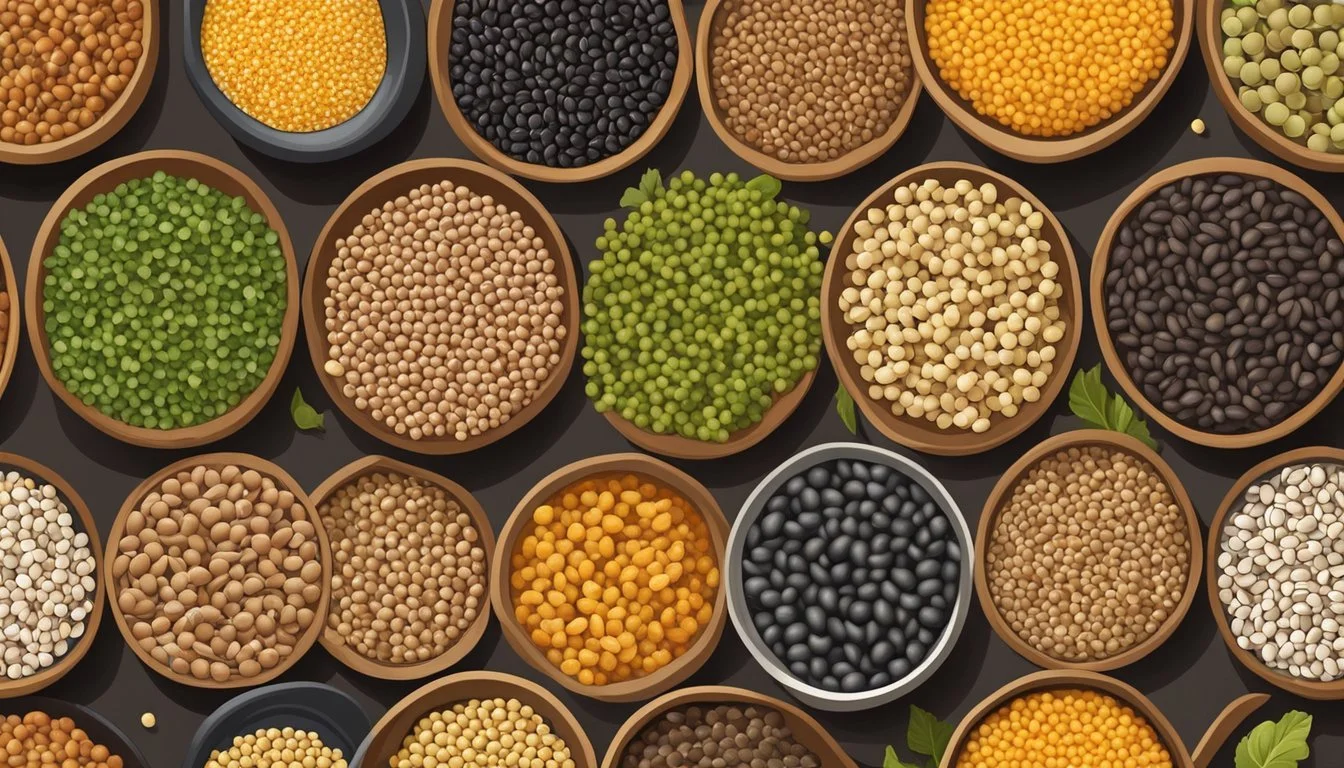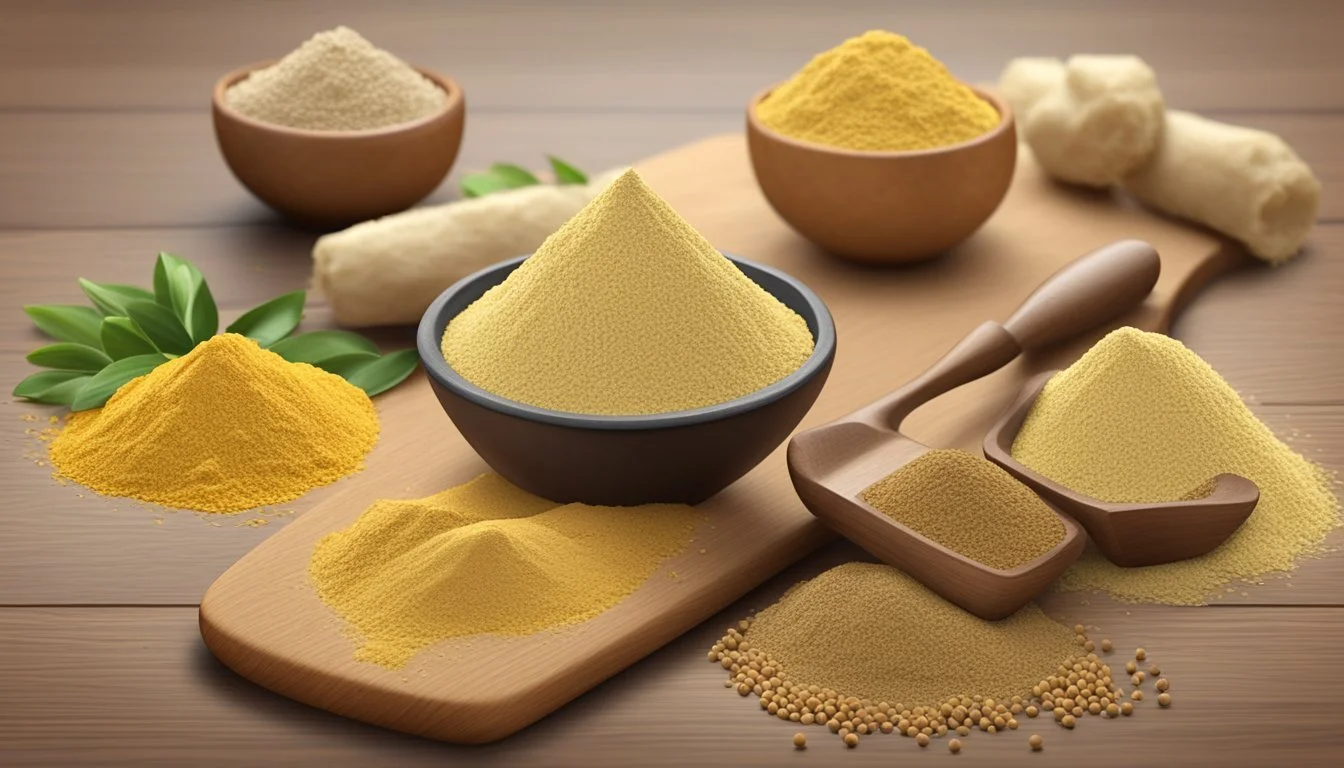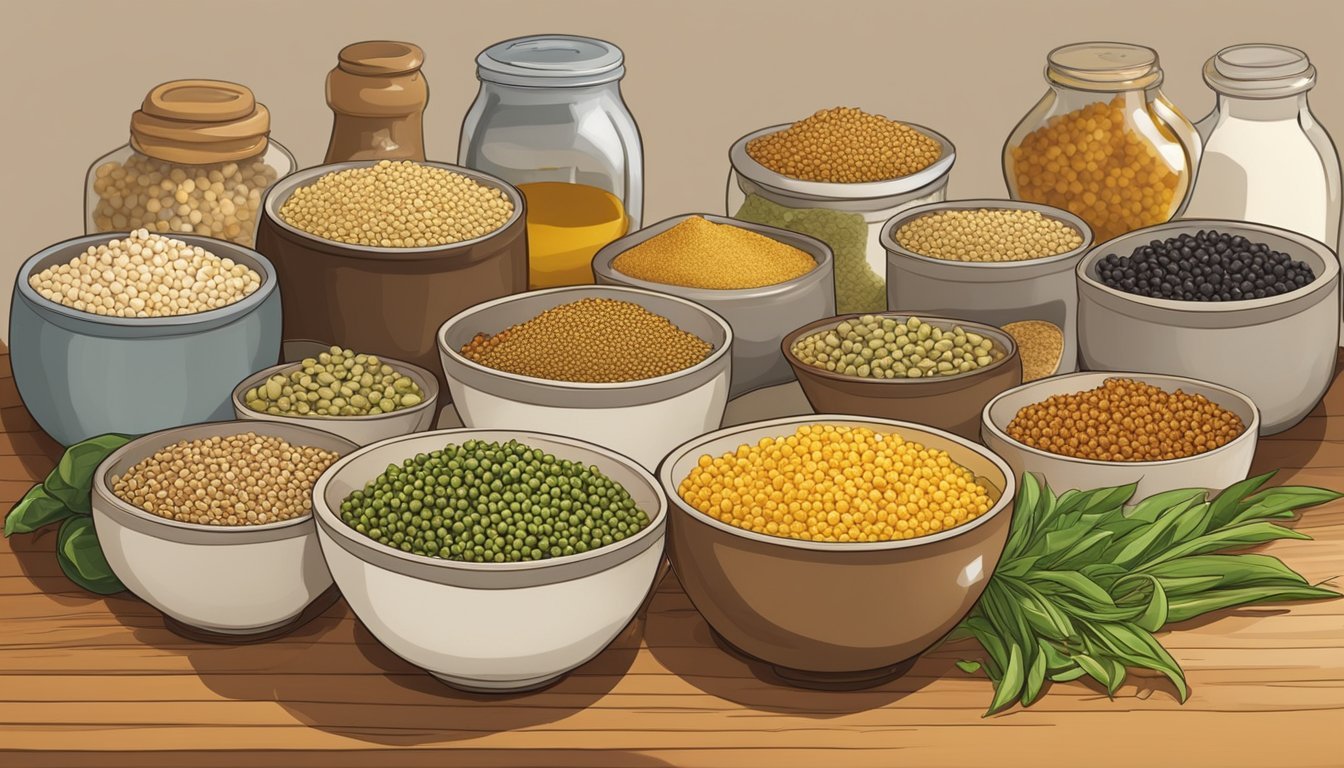Bengal Gram Substitutes
Top Alternatives for Indian Cooking
When it comes to replacing Bengal gram in recipes, there are several viable alternatives that can maintain the integrity and flavor of your dishes. Bengal gram, a small, dark brown chickpea rich in protein, is a staple in Indian cuisine, often used in curries, dal, and even as a healthy snack. With its dense, nutty texture, finding the right substitute can enhance or slightly alter your culinary creation.
For those seeking gluten-free options, millet flour and quinoa flour are excellent choices. Millet flour can be used in a 1:1 ratio as a substitute for gram flour in various recipes, offering a slightly sweet flavor while ensuring the dish remains gluten-free. Quinoa flour is another substitute that provides a comparable protein content and a unique flavor profile, perfect for those looking to experiment with their recipes.
Spelt flour, although not gluten-free, is also an excellent substitute for gram flour. It can be mixed with wheat or rice flour for baking purposes. Each of these substitutes offers unique benefits, allowing you to tailor your cooking to specific dietary needs and taste preferences, ensuring that your meals remain delicious and nutritious without relying solely on Bengal gram.
Understanding Bengal Gram
Bengal gram, also known as kala chana or desi chickpeas, is a staple in Indian cuisine. It is valued for its high protein and fiber content, as well as its rich nutritional profile.
Historical Significance and Nutritional Profile
Bengal gram has a long history in Indian agriculture. It's been a crucial crop for centuries due to its resilience and nutritional benefits. Rich in protein, fiber, and essential minerals like iron, magnesium, and potassium, it is a nutritional powerhouse. The high protein content makes it particularly valuable for vegetarian and vegan diets.
In terms of nutrients, Bengal gram stands out with 19 grams of protein and 17 grams of fiber per 100 grams. This makes it an excellent choice for those looking to boost their dietary intake of these essential nutrients. Additionally, the iron in Bengal gram supports healthy blood circulation, while magnesium and potassium are vital for muscle and nerve function.
Bengal Gram in Indian Cuisine
In Indian cuisine, Bengal gram is indispensable. It is often used whole in dishes like curries and stews. When split and hulled, it becomes chana dal, which is used in various dals and soups. This versatility makes it a cornerstone of Indian cooking.
Popular dishes include chana masala, where whole Bengal gram is cooked with tomatoes, onions, and spices. In its split form, Bengal gram is used to make dal tadka, a spiced lentil dish. Another common preparation is chana chaat, a spiced chickpea salad often served as a snack.
Bengal gram's ability to absorb flavors from spices makes it a favorite in richly seasoned dishes. Whether in whole or split form, it provides both nutrition and flavor, cementing its place in Indian culinary tradition.
The Role of Bengal Gram in Cooking
Bengal gram, also known as chana dal or split chickpeas, is a versatile ingredient that plays an essential role in various culinary traditions. Its unique texture and distinct earthy flavor make it indispensable in numerous dishes.
Common Uses in Recipes
Bengal gram is a staple in many Indian and South Asian cuisines. It serves as a key ingredient in dishes like soups, stews, and rich curries.
In addition to these, it is commonly used to make crispy snacks such as chana dal namkeen and savory delights like Bengal Dal kebabs. Its adaptability to both pressure cooking and baking adds to its widespread usage in different recipe methods.
Texture and Flavor Profile
The texture of cooked Bengal gram is firm yet tender, making it an excellent choice for hearty dishes.
It offers a nutty and slightly earthy flavor, enhanced when cooked with spices such as cumin, turmeric, and garlic. This unique combination of taste and texture allows Bengal gram to complement a variety of ingredients, enriching the aroma and taste of the dishes it is part of.
Primary Alternatives to Bengal Gram
There are several effective substitutes for Bengal Gram, each with unique properties and nutritional benefits. These alternatives range from other legumes to various grains and seeds that can suit different culinary needs.
Legume-Based Substitutes
Split peas are an excellent alternative due to their similar protein content and texture. They are available in green and yellow varieties and can be used in soups, stews, and purees. Their cooking time is similar to Bengal gram, making them convenient in recipes that traditionally use Bengal gram.
Lentils
Lentils are highly versatile and come in various colors, such as green, red, and brown. They offer a nutty flavor and soft texture upon cooking, fitting well in curries, salads, and soups. Nutritionally, lentils are rich in protein and fiber, making them a healthful substitute.
Various beans, such as black beans, kidney beans, and pinto beans, can also replace Bengal gram. While they may have a different texture and flavor profile, they provide similar nutritional benefits, including high protein and fiber content. They are ideal for use in hearty stews and chilis.
Grain and Seed Substitutes
Quinoa
Quinoa is a nutrient-dense seed that can stand in for Bengal gram in side dishes and salads. It has a slightly nutty taste and cooks quickly. Quinoa is a complete protein, meaning it contains all nine essential amino acids, making it a valuable addition for those seeking a higher protein intake.
Millet
Millet offers a mild flavor and can be used in place of Bengal gram in baked goods and porridges. It is gluten-free and highly digestible. Combining millet with other flours, such as rice or wheat, can enhance its texture and versatility in various recipes.
Spelt Flour
Spelt flour is another viable substitute, particularly for baking. It offers a mildly sweet and nutty flavor and can add more elasticity to dough when mixed with other flours. Although not gluten-free, it is easier to digest than regular wheat flour and has a nutritional profile rich in protein and fiber.
Gluten-Free Bengal Gram Substitutes
Finding a substitute for Bengal gram that is both gluten-free and nutritious can be essential for those on a gluten-free diet. This section explores various flour and whole food alternatives that can serve the same purpose, catering to different culinary needs.
Flour Alternatives for Baking
For those needing a gluten-free flour alternative to Bengal gram, several options stand out. Chickpea flour, also known as gram flour or besan, is a versatile and popular choice. It shares a similar texture and nutritional profile, making it ideal for baking and cooking.
Another excellent option is quinoa flour. It is rich in protein and fiber, offering a slightly nutty flavor. It works well in baked goods and as a thickening agent in sauces.
Rice flour is another alternative. It's a light, fine flour suitable for delicate baking recipes, such as cakes and pastries. Additionally, almond flour provides a moist texture and a subtle nutty taste, perfect for cookies and bread.
Lastly, oat flour is a nutritious option, high in fiber and with a mild flavor. It's best used in combination with other gluten-free flours to improve texture and binding.
Whole Food Alternatives for Gluten-Free Diets
When seeking whole food substitutes, whole chickpeas are a direct replacement for Bengal gram. They can be used in soups, stews, and salads after soaking and cooking.
Quinoa serves as another nutritious alternative. High in protein and fiber, it can be used as a side dish, in salads, or as a base for plant-based burgers.
Lentils offer a versatile and nutritionally rich option. They are available in various colors and can be used in curries, soups, and as a meat substitute.
Buckwheat groats are an excellent gluten-free grain. Despite the name, buckwheat is not related to wheat and is safe for gluten-sensitive individuals. It can be used in porridge, salads, and even baked goods.
These gluten-free substitutes provide both variety and nutrition, making them valuable staples in a gluten-free diet.
Specialty Substitutes for Specific Dishes
Choosing the right Bengal gram substitute can significantly impact the flavor and texture of your dish. Selecting substitutes that cater to specific types of dishes ensures that the replacement complements the original recipe as closely as possible.
Substitutes for Snacks and Appetizers
For snacks like falafel and veggie burgers, using quinoa flour can be an excellent substitute. Quinoa flour provides a slightly nutty taste and enough protein content, making it ideal for binding ingredients together.
Almond flour is another good option, especially for dishes like baked snacks or hummus. Almond flour offers a fine texture and a mildly sweet flavor, which works well in various appetizers.
Millet flour can also replace Bengal gram flour in batters and fritters, providing a similar consistency and keeping the dish gluten-free.
Substitutes in Main Courses
For main courses, such as curries and dal, masoor dal (red lentils) is a good alternative. Red lentils cook relatively quickly and offer a similar texture and protein content, making them suitable for stews and thick soups.
Black beans can be used as a substitute in dishes that require a rich, earthy flavor. These beans are dense and nutritious, perfect for hearty meals.
Split peas (yellow or green) are another great option for main course recipes, as they bring a robust flavor and creamy texture to dishes like dals and curries.
Substitutes for Salads and Sides
For salads and side dishes, canned chickpeas or cooked quinoa are excellent substitutes. Canned chickpeas are easy to use and provide a similar flavor and texture to whole Bengal gram, making them suitable for various salad recipes.
Pearl barley can be used in grain salads, offering a chewy texture and nutty flavor, which complements the freshness of other salad ingredients.
Lentils (green or brown) are versatile and can replace Bengal gram in salads and side dishes, providing a good source of protein and a firm texture that holds up well in cold dishes.
Storing and Handling Substitutes
Proper storage and handling of Bengal gram substitutes ensure their maximum shelf life and optimal cooking results. These practices involve specific techniques and ingredients commonly found in kitchens.
Best Practices for Extend Shelf Life
To maximize the shelf life of Bengal gram substitutes, storing them correctly is essential. Always keep them in airtight containers to prevent moisture and contaminants from affecting their quality. Place the containers in a cool, dry place, away from direct sunlight.
For substitutes like chickpeas, onions, and garlic should be stored separately to avoid odors from mingling. If the substitutes have been cooked, they should be refrigerated and consumed within 3-5 days. When freezing cooked substitutes, store them in freezer-safe containers with minimal air space to prevent freezer burn.
Cooking Tips for Optimal Texture and Flavor
Achieving the best texture and flavor when cooking Bengal gram substitutes involves careful preparation. Use fresh water to soak and cook legumes such as chickpeas and split Bengal gram. Adding a pinch of salt can enhance their natural flavor.
Onions and garlic can be sautéed with a little oil before introducing the substitutes to infuse additional taste into the dish. Maintain a low to medium heat to avoid burning the ingredients. Cooking for the right amount of time preserves the texture, ensuring they are neither too hard nor too mushy.
Following these tips will result in substitutes that not only taste great but also retain a pleasing texture.
Health Considerations with Bengal Gram Substitutes
When considering Bengal gram substitutes, it's essential to address their health implications.
Chickpeas, for instance, are rich in plant-based protein. They serve as an excellent protein source for vegans and vegetarians. They also provide a good amount of dietary fiber.
Lentils, such as red lentils or split green gram, are equally beneficial. They are high in fiber and antioxidants which support heart health and may reduce the risk of certain chronic diseases.
Black chickpeas (or kala chana) resemble Bengal gram closely. These are also high in protein and fiber content. The darker color indicates a higher content of antioxidants.
In terms of heart health, these substitutes generally contain no cholesterol and are low in saturated fat, which helps maintain healthy blood lipid levels.
Sprouting substitutes such as mung beans or green grams enhance their nutritional profile. Sprouting increases the content of vitamins, such as vitamin C and some B-group vitamins.
Using a variety of grains and legumes ensures a balanced intake of essential amino acids, vital for overall health.
Incorporate these substitutes into a balanced diet to achieve the health benefits associated with Bengal gram substitutes.


